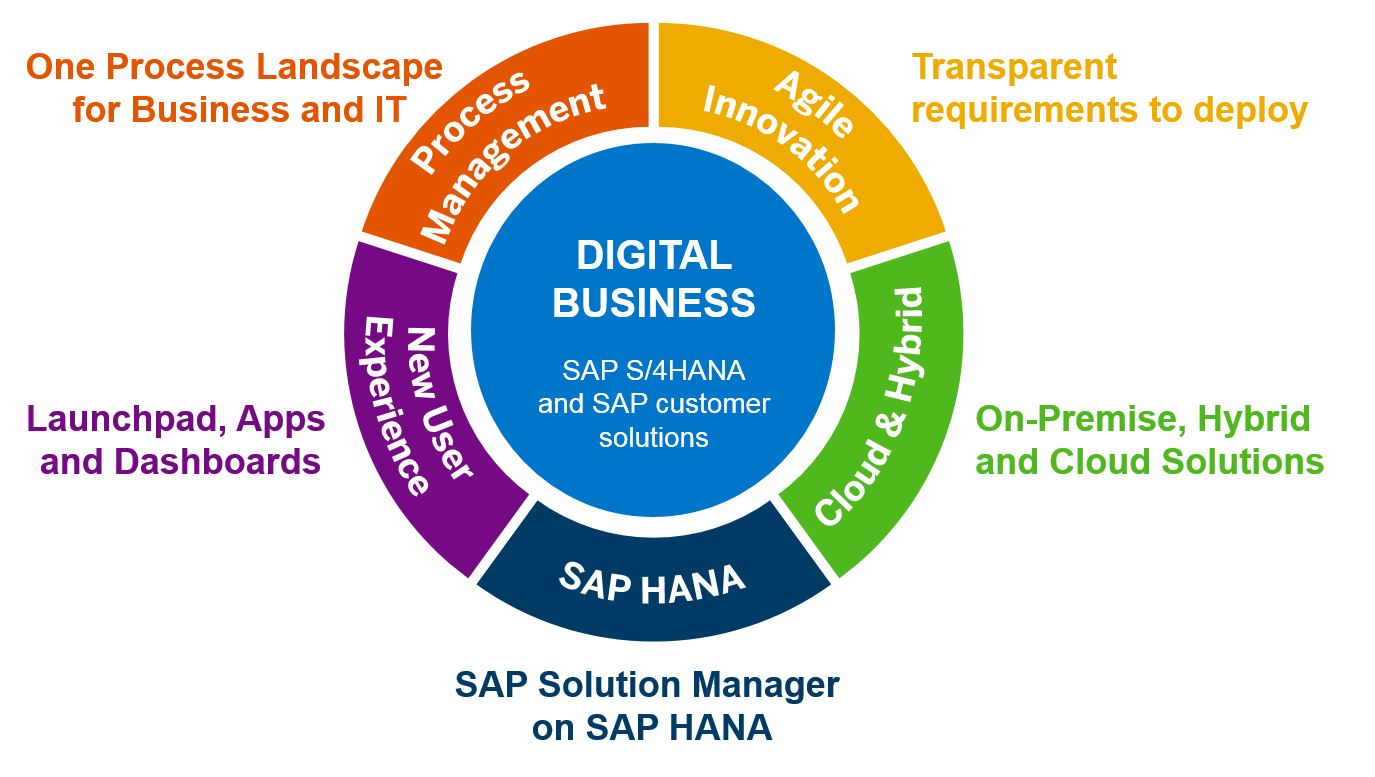Top 10 Ways Technology Will Affect the Future of Customer Service

This post will explain . There’s a great deal of excitement about brand-new technology in customer service, support, and success. The development of video, real-time messaging, chatbots and artificial intelligence (AI), cryptocurrencies, self-service, and even customer success itself, all present the potential for big modifications in the daily operations of customer success practitioners.
However with new innovation come obstacles, too. There’s a steep learning curve when it concerns finding out to use and adjust to brand-new innovations, they can be pricey for companies to carry out, and there’s the looming issue all of us feel about some new tech: Will it steal our tasks?
Top 10 Ways Technology Will Affect the Future of Customer Service
In this article, you can know about
The short answer is no. The majority of new technologies will just serve to assist customer-facing specialists to do their tasks more effectively. These innovations may change your job, however, and that’s where these predictions can be found in. Read this article to get my thoughts on the future of service technology– and how it will alter your day-to-day work, along with the trajectory of your career.
Service innovation is software that assists customer service teams in attaining customer success. These tools enhance workflow effectiveness and make it simpler for companies to provide efficient services to their consumers. Embracing service technology assists business handle the increasing demand for impressive customer service.
Now that we hold that out of the process, let’s have a look at how service technology will change customer service over the subsequent decade.
How Customer Service Technology Will Shape the Future of Customer Service
1. Face to face video interaction will increase.
Eye contact is effective, and clients, more and more, will look at non-video, real-time voice conversation as a distant memory. Companies using video– asynchronously, as “video voicemail” (e.g. Loom) or synchronously, as “video conference” (e.g. Zoom with video)– are a period ahead.
We know that eye contact changes relationships & assists in openness (whether that’s in organization or in your personal life), so video is not just a growing expectation of consumers, however a practical business-improving tool for vendors. You ought to start utilizing video voicemails now, and set up conferences with clients should involve an in person conference whenever possible.
2. Consumers will anticipate an omni channel service activity.
Your brick-and mortar stores aren’t the only places where clients communicate with your company. With social media, ecommerce, and third-party evaluation sites, customers can engage your business through a range of digital mediums.
This increased availability will drive the need for omni-channel experiences. Omni-channel assistance is distinctly various from multichannel support as omni-channel syncs your communication channels together so both your group and your consumers can work effortlessly in between them. Also check services rendered.
For example, instead of customers having to browse far from your social media page, your service team can react to them anywhere they’re engaging your organization. Then, if the problem can’t be fixed on one communication channel, your associates can easily transfer the case to another medium where they can much better support the customer.
This reduces friction in the service experience since consumers don’t need to log off one interface just to log into another one to continue working on the very same problem.
To do this, you’ll require to link an assistance desk as a central inbox for all inbound customer queries. That way, no matter where an communication starts online, your representatives use the same user interface to communicate with your customer base.
3. Real-time messaging will exceed e-mail.
Email is dead, and long live chat. Right? Well, yes and no. Just like video, clients anticipate you to be always on– and most of them prefer to interact utilizing chat than phone or e-mail. Facebook Messenger as a channel for assistance has actually pressed us ahead light years! Now, you can speak with businesses in real-time, and Facebook will even reveal you their average responsiveness (and if that responsiveness is poor, forget even engaging at all).
This expectation of real-time messaging and responsiveness permeates into other media, too. It’s not simply the expectation on Facebook Messenger or Slack (either internally or with vendors), but on-site discussions and chat are all expected to be real-time, 1:1, and genuine. That’s a huge change from the world of asynchronous snail mail, and after that e-mail.
The world runs in simultaneous time now– so that means you require to amp up your interaction innovations and techniques while still utilizing e-mail to share essential files and interactions your customers will want to come back to again and again. HubSpot uses a shared inbox tool that allows all inbound messages from clients, throughout channels, to be collected and appointed in one place.
4. Remote work will become more normal.
The future of customer service will not just push customers online, but it’ll move service associates there, too. Rather than being restricted to call centers, service representatives will have more tools to work remotely. They’ll field client inquiries from the comfort of their homes, alternatively of having to work in an office setting.
And, the majority of service channels can currently be utilized outside offices and call centers. Email, live chat, and social networks can even be run from a smart device and most organization phone services use cloud-based options that allow you to work from home. As services see the potential cost savings of lowering office, it’ll end up being much more typical for service reps to work remotely. Also check branding services.
5. Bots (and AI) will assist specialists, not replace them.
Ah, bots. Our future robotic overlords, right? Well, possibly not. Today, the majority of “bots” aren’t actually any form of expert system. They’re branched, piecemeal reasoning provided in a conversational (like iMessage or Facebook Messenger) user interface (UI). Bots are just a various interaction mode for existing understanding, and it’s another chance to engage your customers. Conversational UI is a terrific method for businesses to make themselves appear on the bleeding edge of development. Do not get me wrong– that’s a natural form of interaction nowadays, and bots can really be very clever when backed by excellent tech– but it’s not “artificial intelligence”. It’s very clever mathematics, became experience. The near-term chance with bots is two fold:
Bots can be there when you can’t, same while your customer service group is asleep. Bots can enhance self-service for customers, and minimize expenses for vendors, by supplying a brand-new, repeatable, and affordable method of information.
Over the next 10-25 years, this technology will remain to make substantial advances and will can doing even more of what human beings are doing today. It will be smart for customer-facing groups to stay up to date with bot development and remain on the cutting edge here to provide progressively more enjoyable experiences at increasingly lower costs.
Bots and AI will be a game changer for customer assistance, where reps spend near to 90% of their time on the job repeating the answers to the exact same concerns and assisting consumers with the same problems over & over again.
What about the problems humans answer on the job that want judgment? Makers can find out, train, and teach, too. In the future, representatives will only need to deal with edge cases where bots can’t respond to questions with the help of a knowledge base or a previous history of customer concerns. Once you make assistance content public in a knowledge base, a bot can discover and provide that details again and again when consumers ask for it.
When you think about the incoming service framework we’re building, customer assistance has to do with engaging with customers reactively, customer service is about directing them with new recommendations and added worth, and customer success has to do with assisting consumers grow, and can provide infinite additional worth for both the customer & their own company.
In the grand plan of things, when bots and AI end up being a mainstream part of every customer-facing group, leaders will have the ability to reallocate customer assistance representatives into the customer success organization– since there will be less require for the repetitive answering of concerns, and a higher need for assisting consumers grow and obtain value from the product or services they’ve currently bought.
6. Blockchain will change e-commerce customer support.
Cryptocurrency itself is most likely not going to drastically change customer success, because paying with bitcoin (BTC) isn’t too various than paying with other currencies post-sale. However blockchain technology has interesting applications to contracting and how transparent payments remain in the future. Smart contracts– a method for machines to impose and execute agreement terms and payments without human involvement– are a generation ahead of easy recurring payment designs.
You might picture a world in which smart agreements allow customer success supervisors (CSMs) to invest less time quarreling overpayments and hunting down money, and more time concentrating on delivering value. So although the currency change from USD to BTC isn’t likely to become a traditional thing, nor will it have a huge effect on the space, blockchain innovation might essentially alter the face of commerce within the next 25 years, and CSMs, as commercially-involved parties, could change together with it. Also check pet cremation services.
7. Self-service will become an outright necessity.
Considering that the first time someone wrote a user manual, self-service has existed. And as discussed above, bots and AI provide new frontiers of self-service.
But more meaningfully, consumers and users are changing quickly, and they anticipate more self-service avenues than ever before. As we can see from the chart below, there are several types of self-service tools that businesses are providing to their consumers– bought by appeal.
Types of Self Service Channels
Why is that change occurring? Most suppliers that the average consumer communicates with nowadays are big and technologically-sophisticated– think of Amazon, Facebook, Google, Walmart, huge sellers, huge banks so on.
These big businesses are embracing self-service due to the fact that it decreases their expenses of working– however in doing so, they’re likewise forging ahead on more sophisticated techniques of customer interaction. With time, services that can’t or do not stay up to date with this modification will look like dinosaurs to the average consumer.
Picture a world where you engage most often with messenger bots or location-aware mobile apps. You would think it extremely odd if an organization didn’t use these self-service channels, and forced you to use something old like phone or email. General delivery is dead, and phone and email are going to be next. This time, the killer is advanced self-service.
The first step to assisting your clients help themselves? You need a knowledge base where you can draw up answers to typical customer concerns that they can find on Google or using their voice-search gadgets over and over again– without your customer assistance associates needing to talk them through it.
8. Customer service training will be personalized.
Customer service training has typically been one-size-fits-all. Nevertheless, as belief analysis tools make it easier to identify each associate’s strengths and weak points, training will become more customized to the worker’s needs. Representatives who need more time learning the item will be able to master its features, while employees who are more technically savvy will get training that develops their soft interaction skills.
To customize your training, you’ll need to survey your team previously, throughout, and after each exercise. Determine their efficiency and request feedback. This will not just construct trust with your brand-new associates, but it will likewise create an onboarding process that’s distinct to each representative.
9. Customer success will end up being a competitive differentiator.
Over the next 5 years, terrific customer success will end up being an important competitive advantage for business, much like fantastic customer assistance is today.
The customer success industry, and the development of companies in search of customer value, is simply too quick and efficient for this to not occur. Plus, the principles of customer success are permeating beyond just the software-as-a-service (SaaS) industry. It’s spreading out rapidly and growing.
When customer success ends up being table stakes like customer support is today, it will be an interesting time in the industry of customer success to see the takeover. But when that takes place, it’ll present an unique obstacle for business looking to grow their customer list. Effective, recognized companies will have happier clients on the whole, raising the bar even higher for brand-new entrants, even as switching costs of providers decreases for customers.
Plus, customer success will end up being a necessary from the first day, increasing startup costs and dipping margins for brand-new entrants. It’ll be an interesting brand-new set of obstacles to stay ahead of that curve once it arrives– and if you’re currently doing customer success at your company now, you’re ahead of the video game.
10. Customer service decisions will be more data-driven.
No matter which service technology you choose, it needs to include a method to quantitatively determine its success. Without that, there’s no way to show if the added software application is being effective. So, as business continue to embrace service innovation, their customer service groups will end up being much more based on analyzing the success of these programs.
With that shift, there need to be an obvious influx of important data circulating throughout customer service departments. Service innovation records a range of details about customer interactions which are used to recognize neglected customer needs or obstructions. Customer support and success teams then utilize this information to enhance the customer’s experience.
In addition, marketing and sales groups will have an interest in this information because they can apply it to their initiatives also. Marketing teams will utilize these insights to highlight brand-new obstructions and tape them in the customer’s journey map, like the one listed below.
How HubSpot Created Its Customer Journey Map
Sales groups will want this information to understand pertinent customer needs that they can discuss throughout their sales pitch. Embracing service technology will lead to new demand for customer service information that can be advantageous throughout your entire organization.




